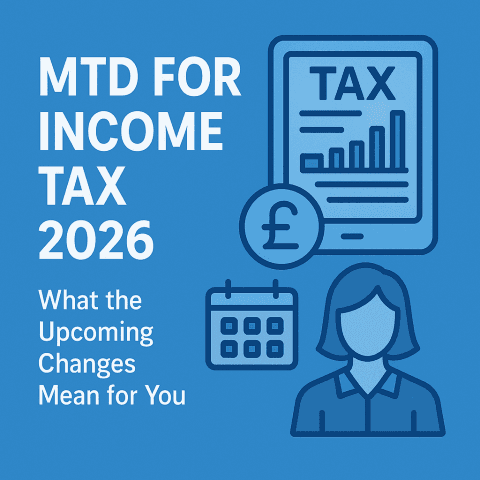
Do You Lose Business Money If You Close a UK Company in 2025?
October 23, 2025Introduction
From April 2026, Making Tax Digital (MTD) for Income Tax will introduce important changes for self-employed individuals and landlords. If you earn above certain thresholds, you will need to file quarterly digital updates instead of the traditional annual Self Assessment tax return. This article explains what MTD for Income Tax 2026 means for you and how to prepare.
What is MTD for Income Tax?
MTD for Income Tax is a government initiative that requires eligible taxpayers to record their income and expenses digitally and submit tax information to HMRC more frequently. The goal is to improve tax accuracy, reduce errors, and make tax management easier throughout the year.
Who is Affected by MTD for Income Tax 2026?
From April 6, 2026:
- Self-employed individuals and landlords with combined income over £50,000 must comply.
- The income threshold will decrease to £30,000 in April 2027 and £20,000 in April 2028, expanding the scope.
If your income falls below these thresholds, current annual filing rules still apply for now.
Key Changes Starting in 2026
- Quarterly Digital Updates: Instead of one annual return, you submit four quarterly updates through MTD-compatible software detailing your income and expenses.
- Digital Record Keeping: You must keep digital records of your business or rental finances.
- Final Annual Declaration: After quarterly updates, you submit a final declaration summarizing your tax calculations and claims.
What You Need to Do to Comply
- Adopt MTD-Compatible Software: Choose accounting software approved by HMRC to manage your records and submissions.
- Maintain Digital Records: Use the software to keep clear, up-to-date records of income and expenses.
- Submit Quarterly Updates: Report your financials every three months on schedule.
- Plan Tax Payments Year-Round: Use updates to stay on top of your tax liabilities rather than waiting for year-end.
How these Changes Affect You
MTD for Income Tax 2026 ensures timely tax reporting and helps avoid end-of-year surprises. By embracing digital tools and quarterly updates, you can manage cash flow better and reduce the risk of errors in your tax returns.
Conclusion
Making Tax Digital for Income Tax from 2026 brings a new way of filing for many self-employed individuals and landlords. Preparing early by choosing software and organising your finances digitally will make compliance smoother. Stay informed to ensure you meet the new quarterly reporting requirements and benefit from more accurate tax management.



